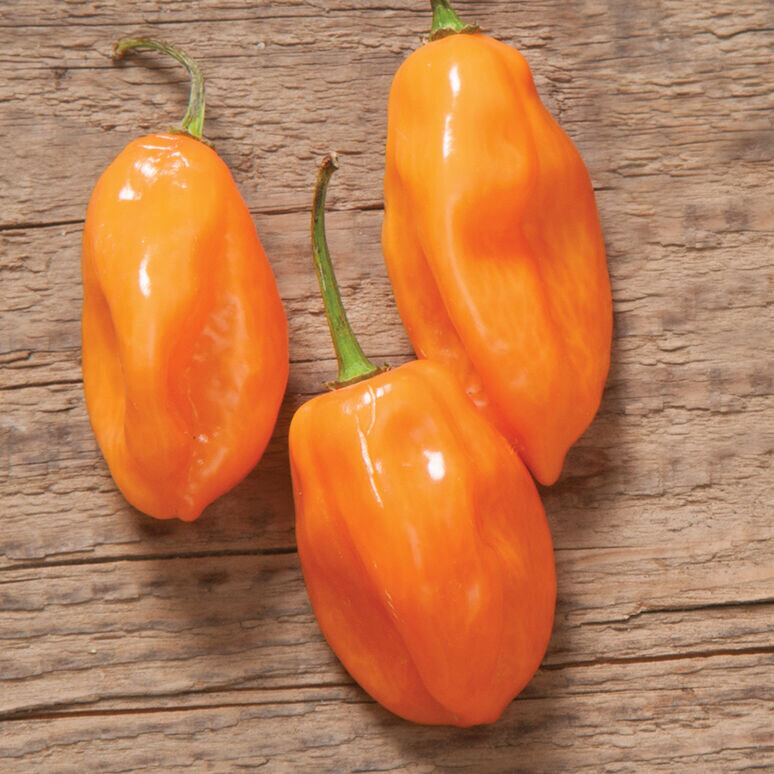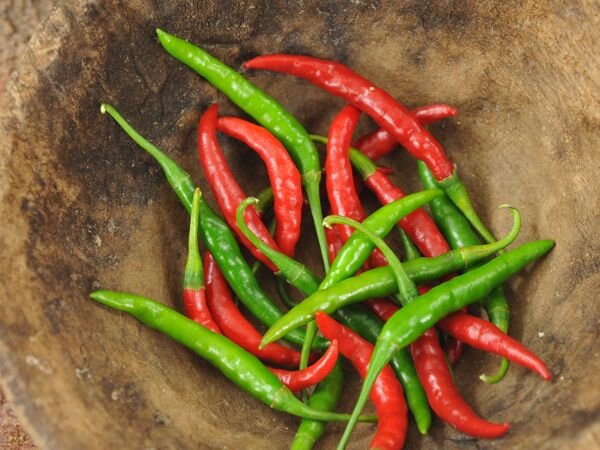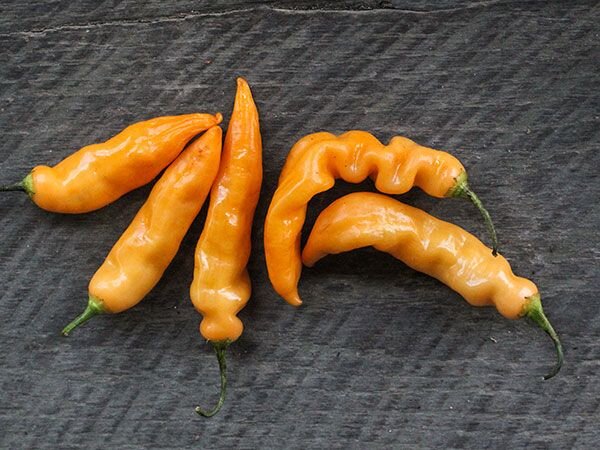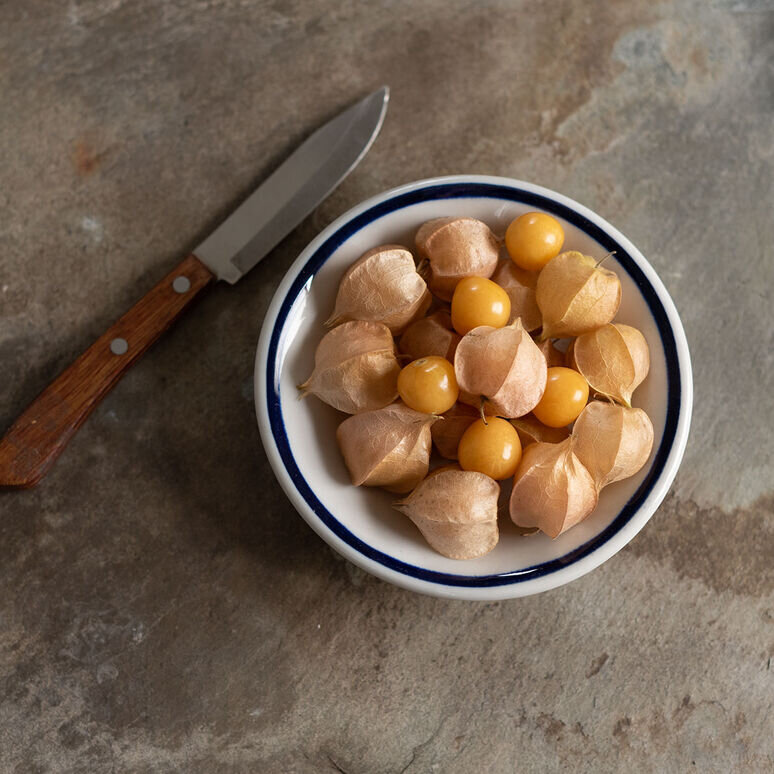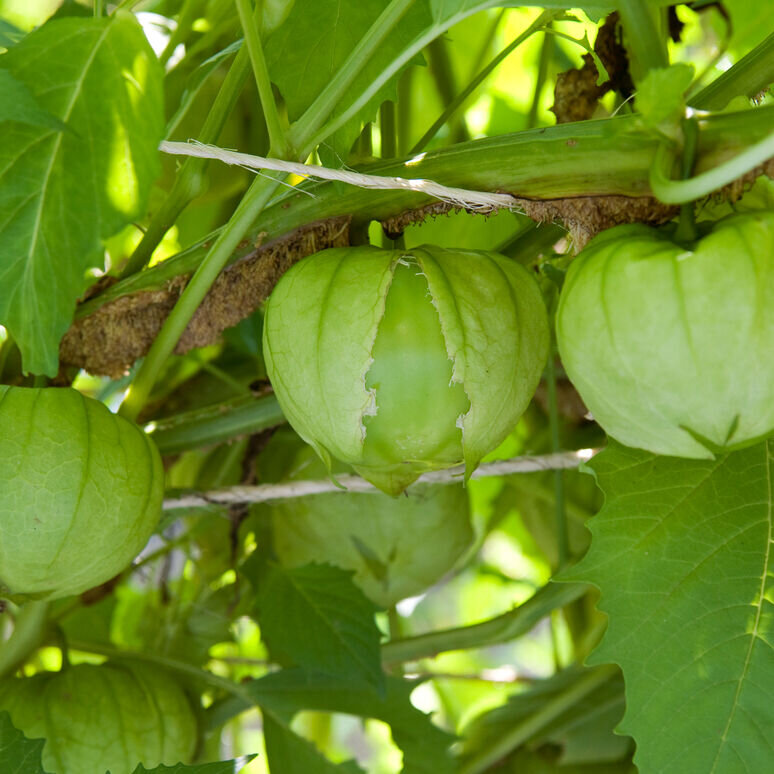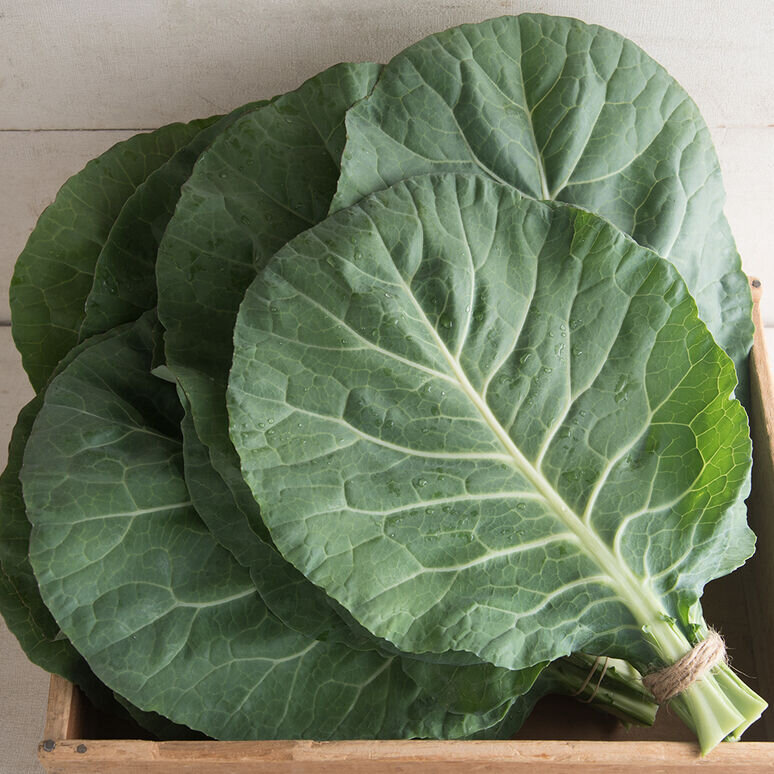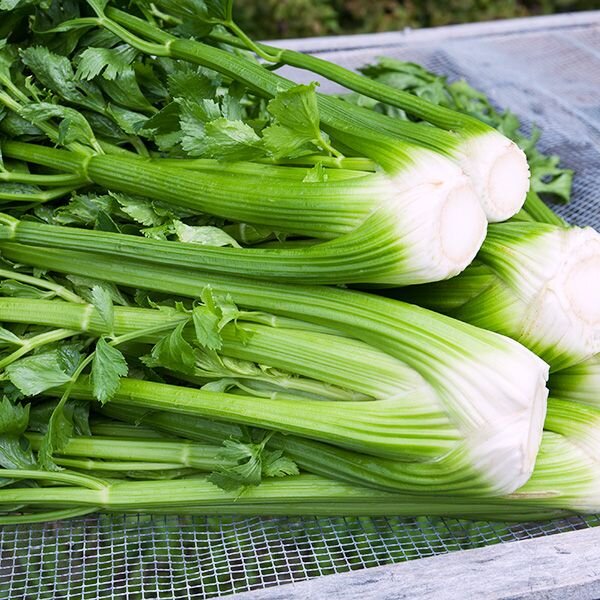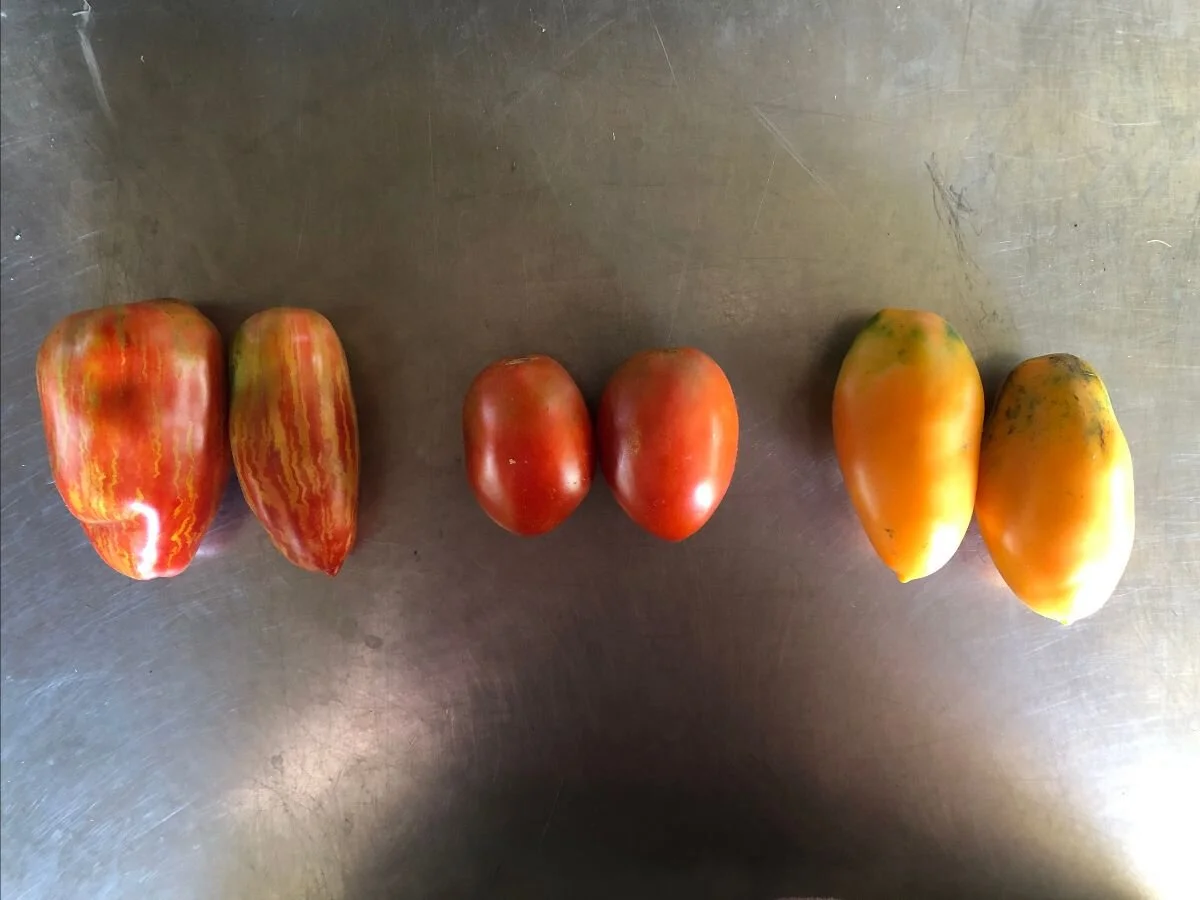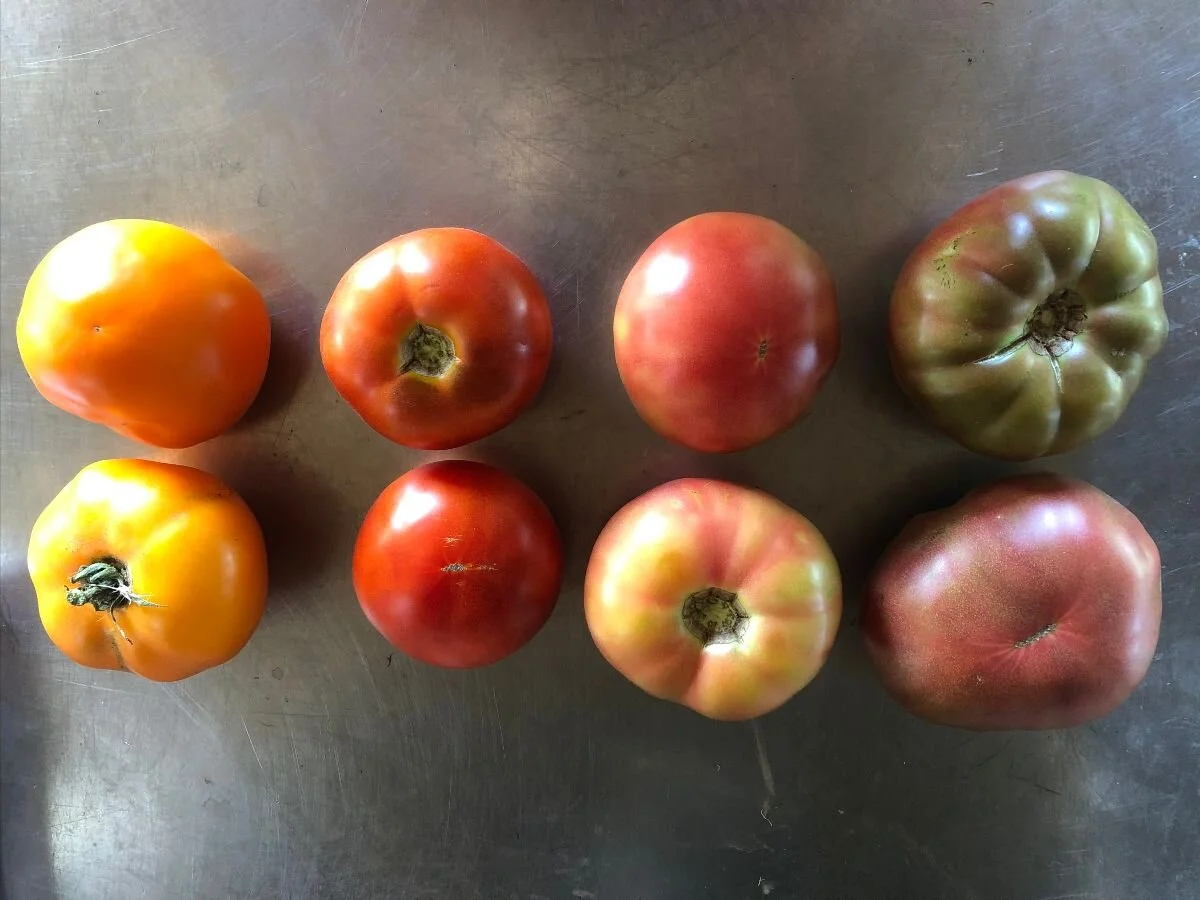Red Rocket Cayenne
5-6” long red peppers with a sweet and hot flavor that are 10 times hotter than jalapeño. Great for drying into powder or adding to dishes for a hot kick.
Magnum Orange Habanero
These small green to bright orange peppers have a strong heat combined with fruity, citrus notes. A key ingredient in Jamaican jerks, but also great in hot sauces, slaws, salsas, or dried for later use.
Lemon Drop
Lemonly yellow 2-3 inches in length with a clean, uncomplicated slightly citrusy heat. Good for making into hot sauce and drying.
Red Thai Chili
Red or green thin, fiery little pointed peppers that are popular in Thailand for flavoring dishes and great for drying.
Jalapeno
This well known green spicy pepper has a medium to hot heat great for all traditional hot pepper needs such as sauces, salsas, stuffing, and pickling. Can be harvested green or red. Smoked red jalapeños are chipotles.
Sugar Rush Peach
Long, peach colored peppers with super sweet, peach-pineapple, smoky flavor and a nice rush of steamy hotness!
Bhut Jolokia Red (Ghost Pepper)
Also known as the Ghost pepper, this red wrinkly pepper is one of the hottest peppers in the world reading over 1,000,000 Scoville units. Great for making intense hot sauces or adding a kick to any dish.
Puma Pepper
Beautiful 2.5-3 inch long fruits with brushstrokes of tangerine and violet, bursting with habanero level heat. Great for making hot sauce!
Hungarian Hot Wax
Yellow, red or orange 3-4 in long peppers with medium to hot heat great for stuffing, roasting, and pickling.
Hot Paper Lantern
Wrinkled, red, lantern-shaped fruits that are 3-4" long with a sweeter, smokey, but hotter taste than habaneros. However, unlike habaneros the heat is slow, meaning you’ll be able to taste the sweetness and light smokiness before the heat. Great for drying, sauces, pickling and salsas.
Brazilian Starfish
Red star shaped juicy fruits with complex floral and fruity tones that offset a medium hotness that can exceed the heat of jalapeños.
Filius Blue Pepper
Compact plants with small violet-blue fruit that are medium to hot.
Leutschauer Paprika
Red pepper with a medium to hot heat that have a sweet aroma and crisp texture great for smoking, drying, and grinding to a delicious spicy powder.
Santa Fe Grande
Spicy, 4-inch peppers, pale yellow, orange or red in color and quite warm; makes pretty pickles and salsa.
Korean Dark Green Pepper
3-4-inch slender peppers that are dark green to red in color with a very spicy and hot flavor. Great for authentic kimchi and other Korean dishes.
Jamaican Scotch Bonnet
Named for their unique shaped fruits which resemble the Scottish “Tam o’ shanter” or “Tammie” hat, these orange to yellow peppers are similar to habaneros in heat and flavor but are a little sweeter with hints of apples and cherries. Great for sauces, slaws, and adding a Caribbean flare to any dish.
Sweet Bonnet
Like the Jamaican Scotch Bonnet but with significantly less heat! It should be milder than a jalapeño. The perfect pepper for making mild Caribbean recipes.
Habanada
A truly heatless habanero! Has the floral sweet flavor of a habanero but no heat. Looks like a habanero but instead of a rounded bottom, it has a pointed bottom. Great for eating fresh.


